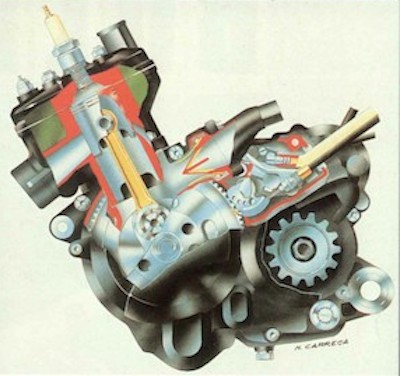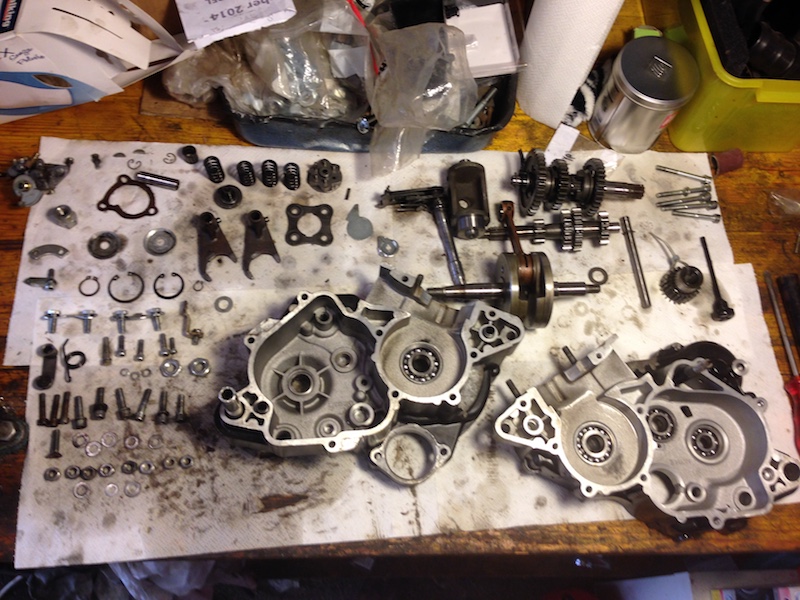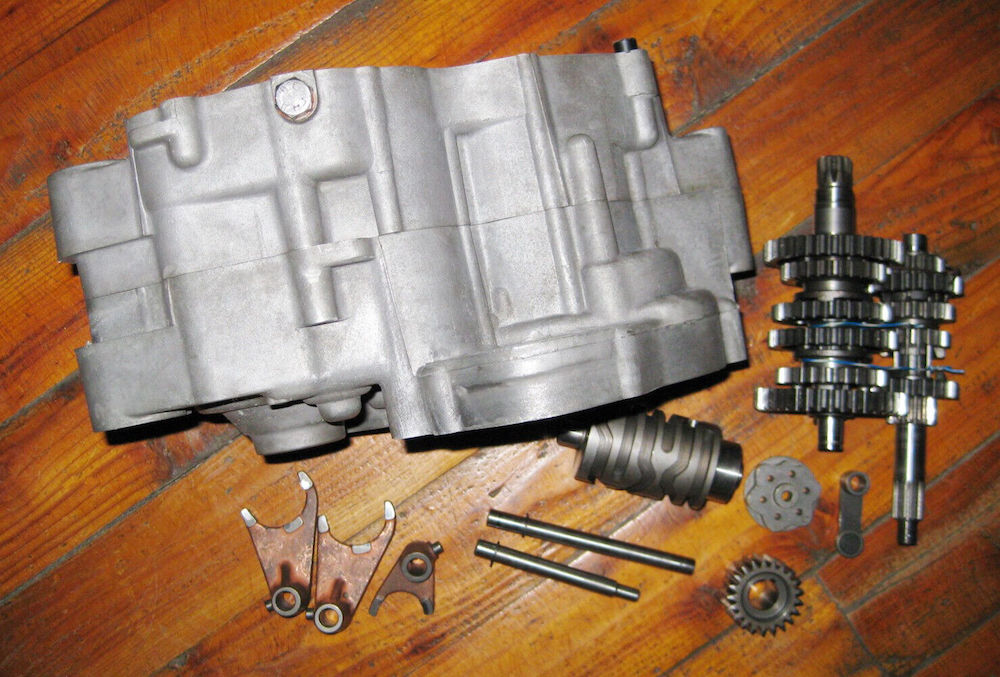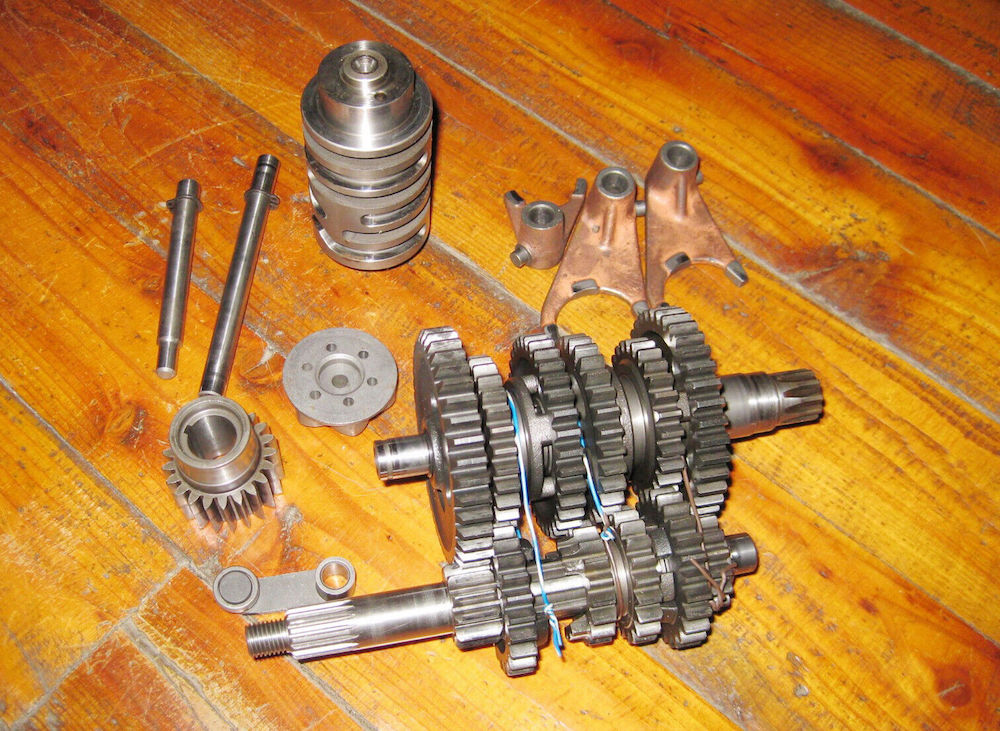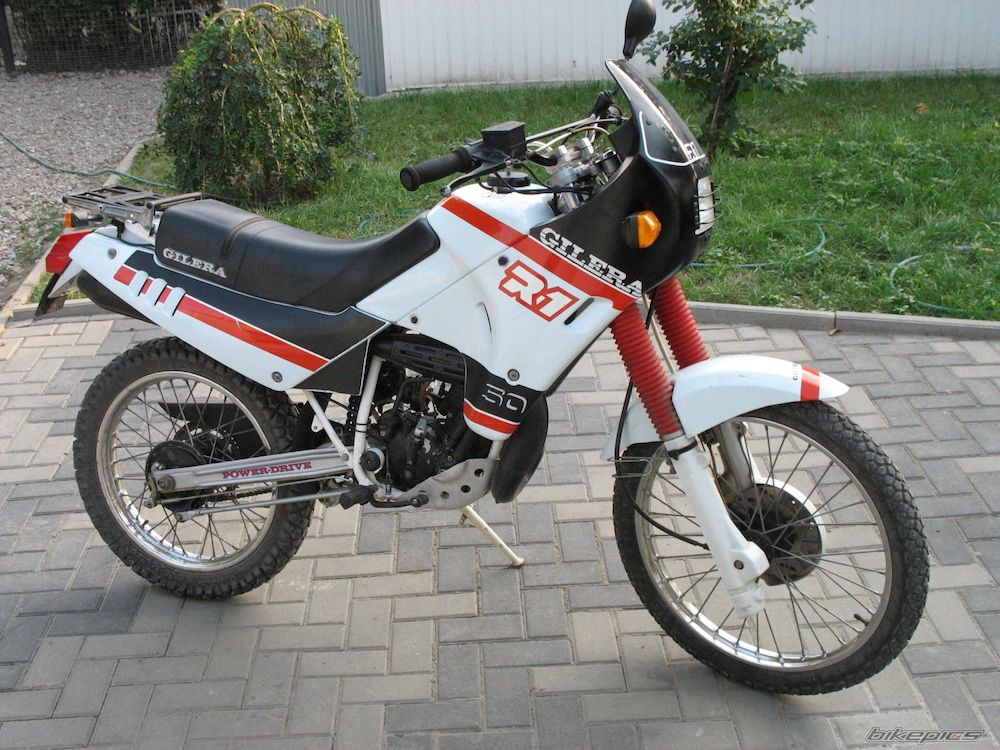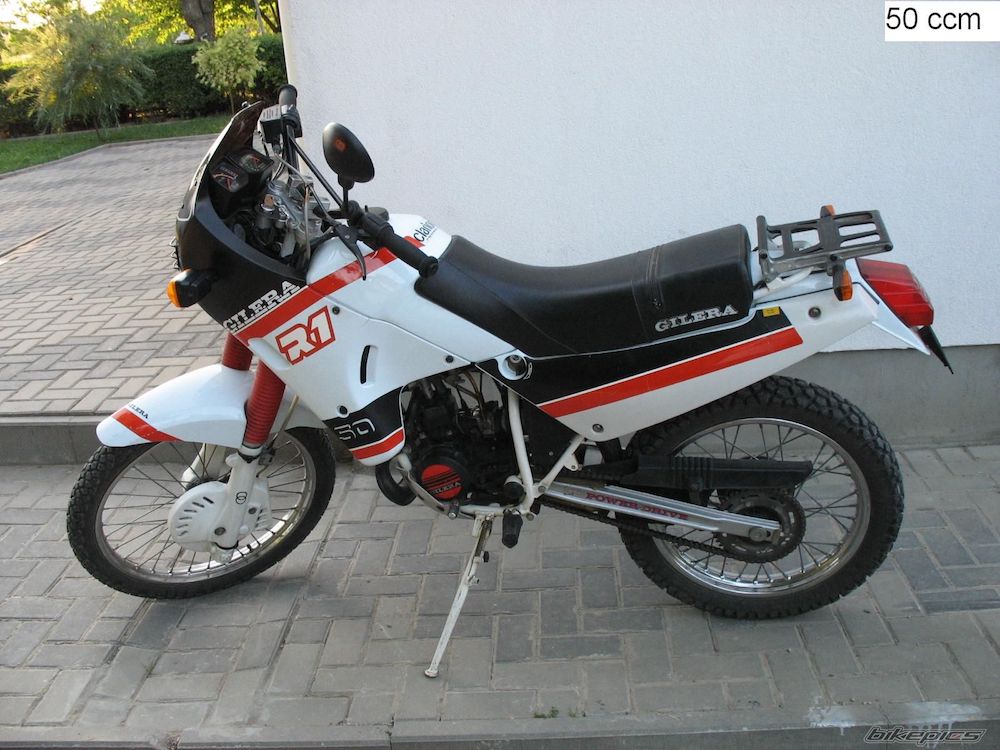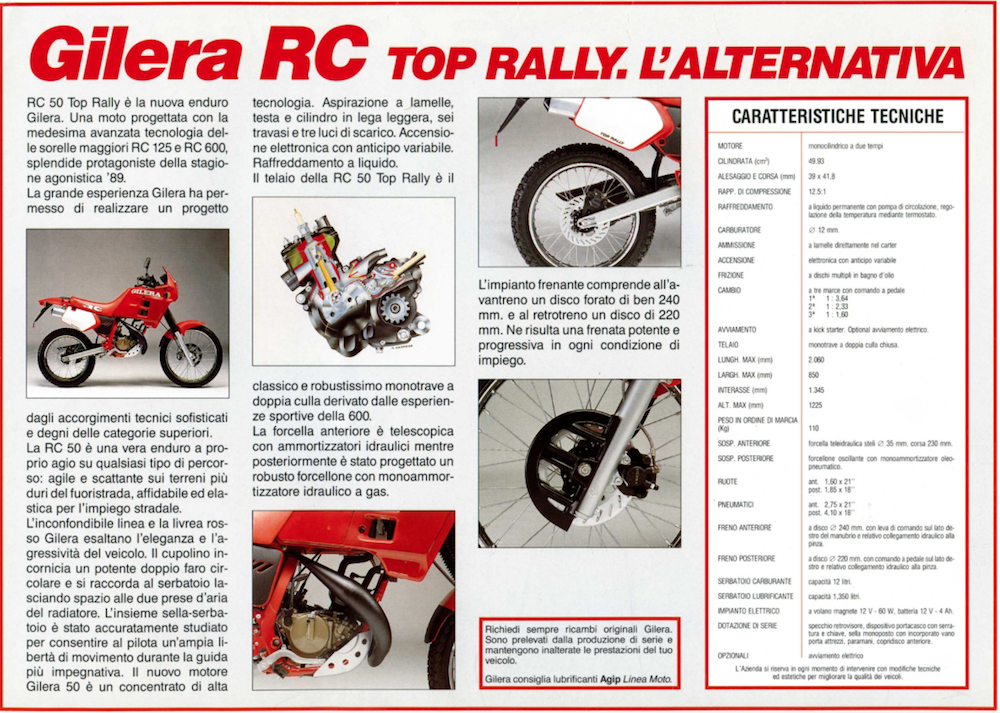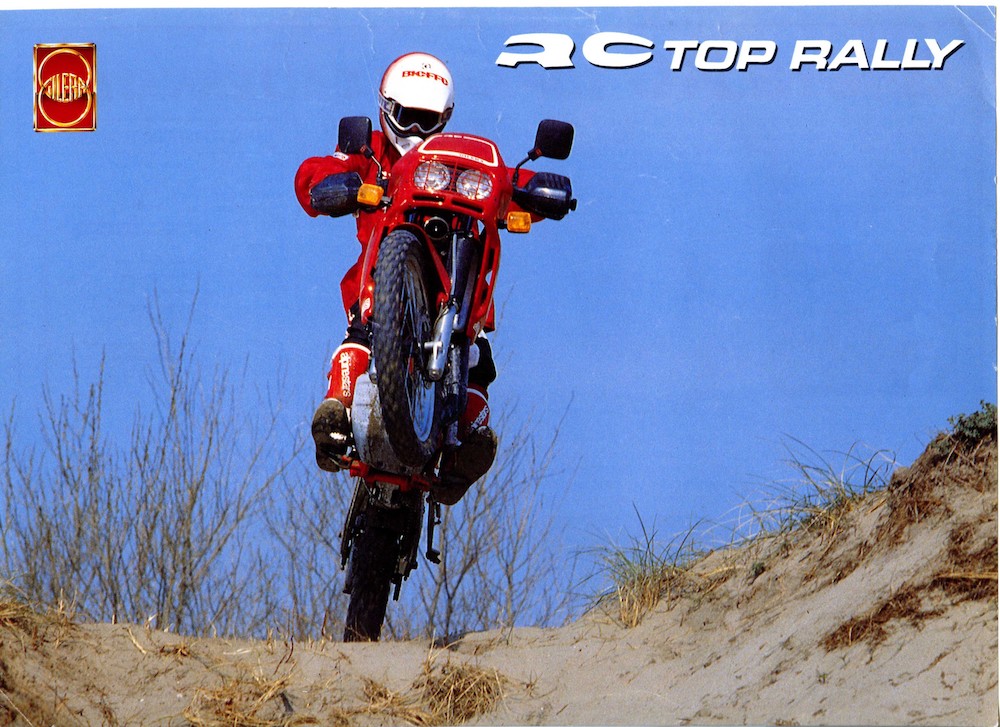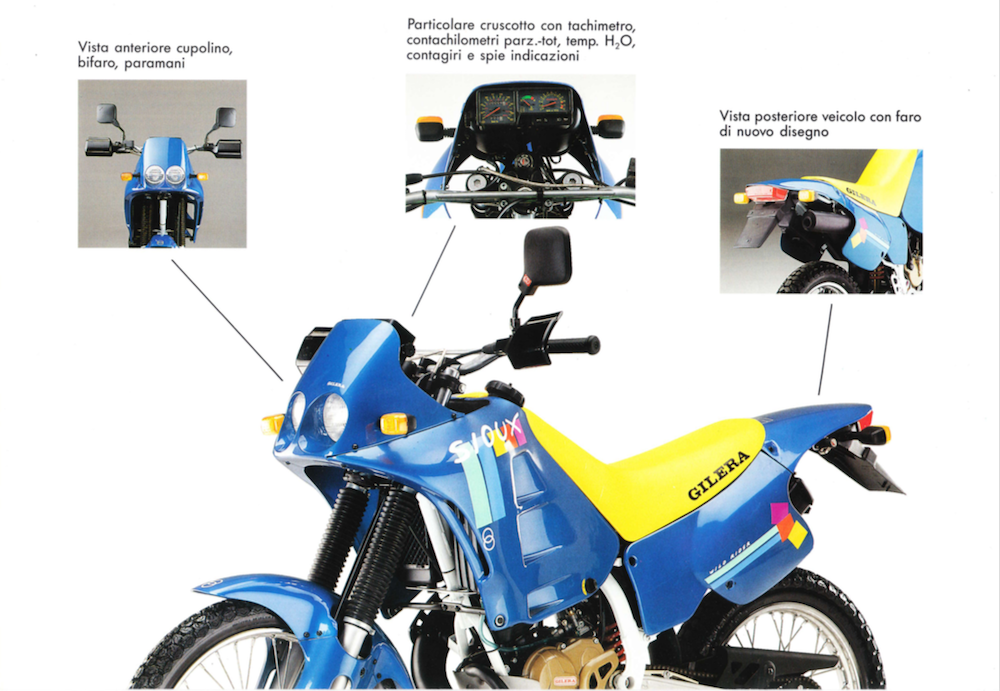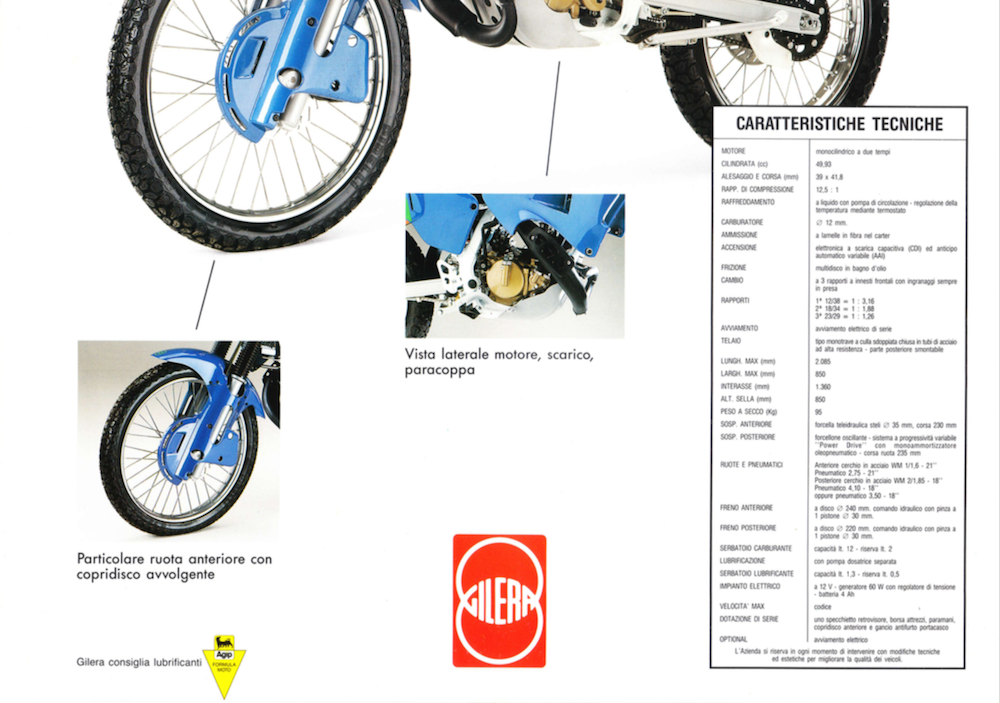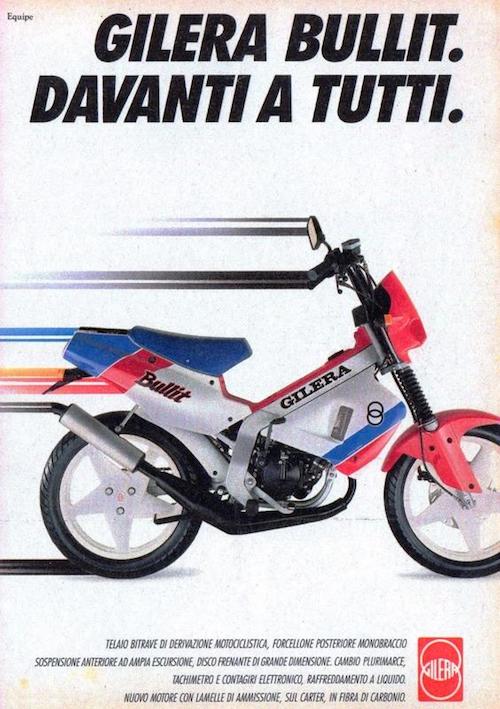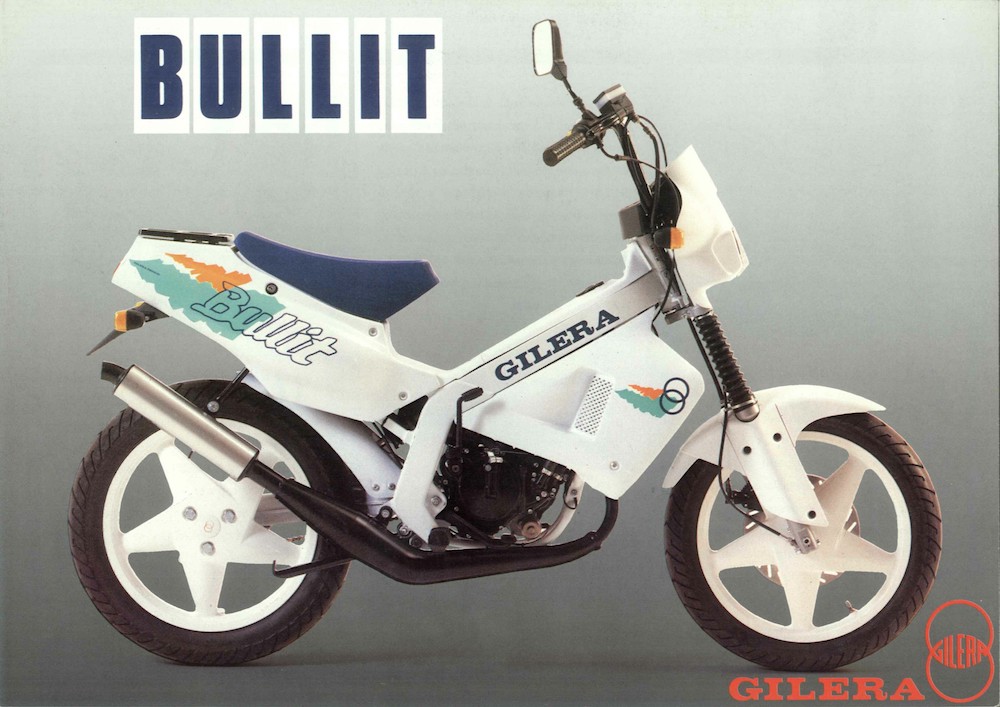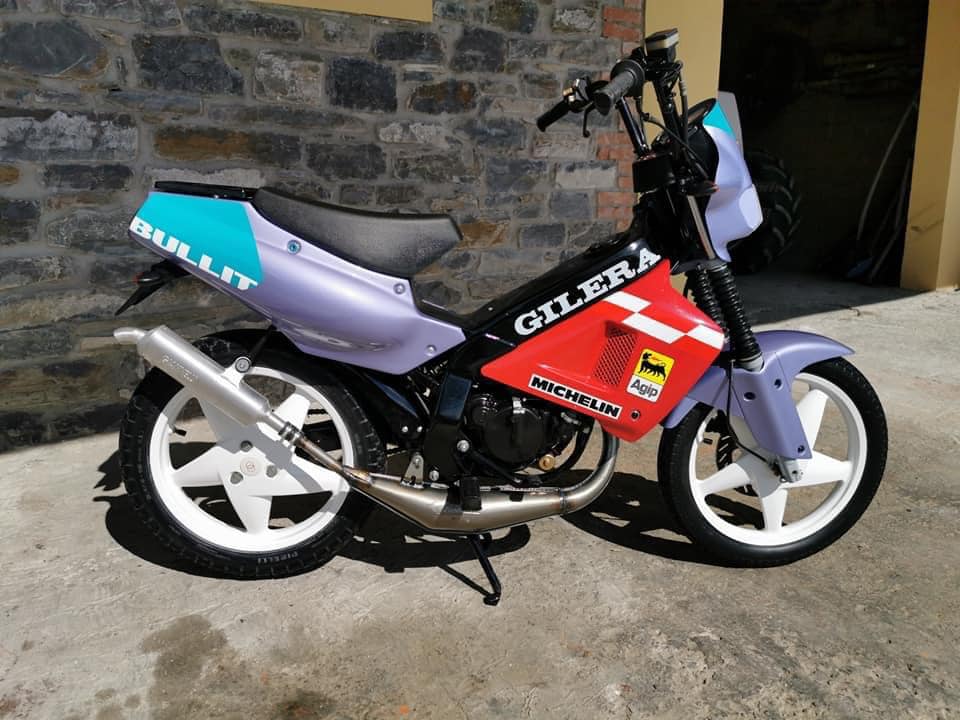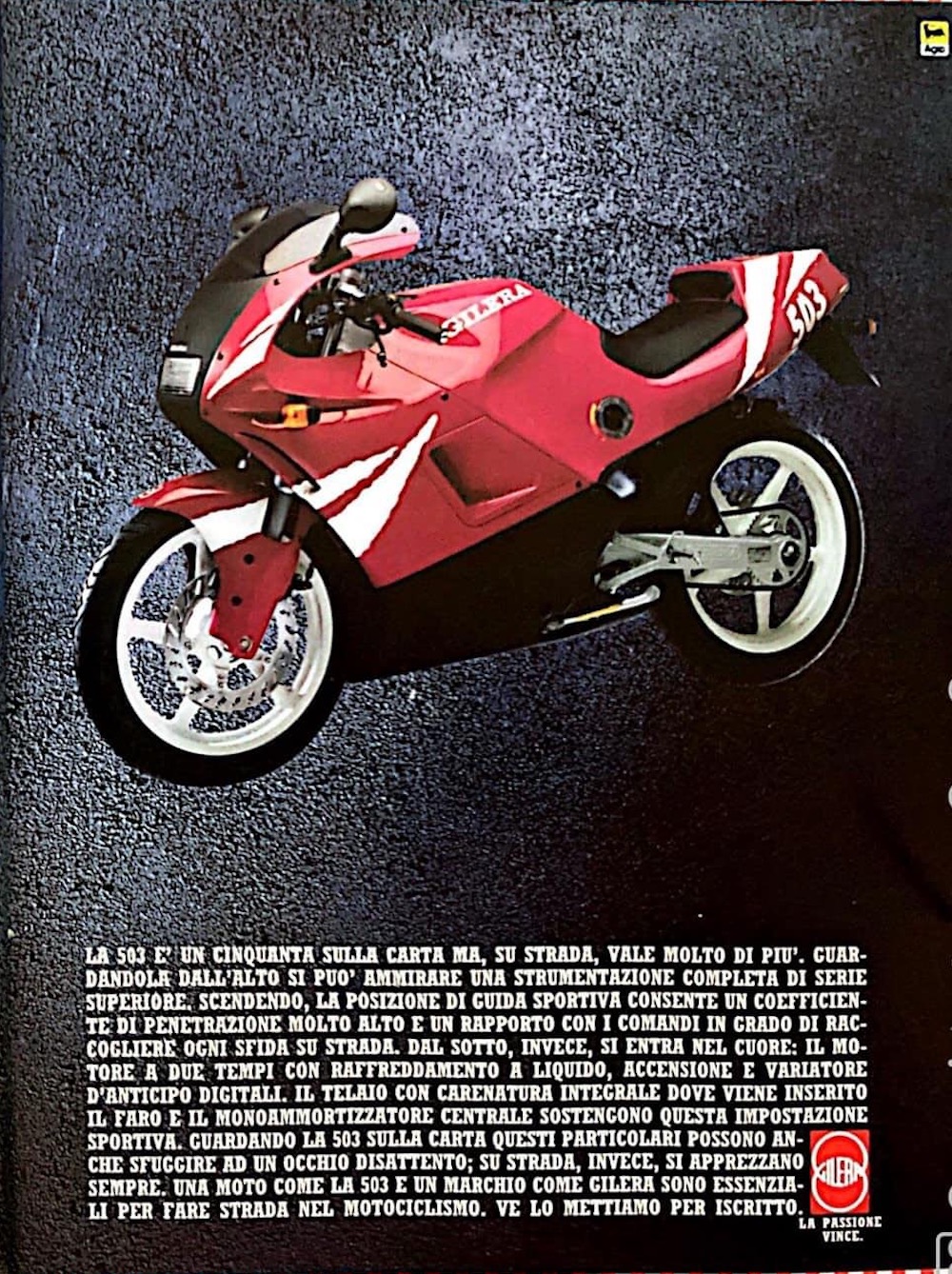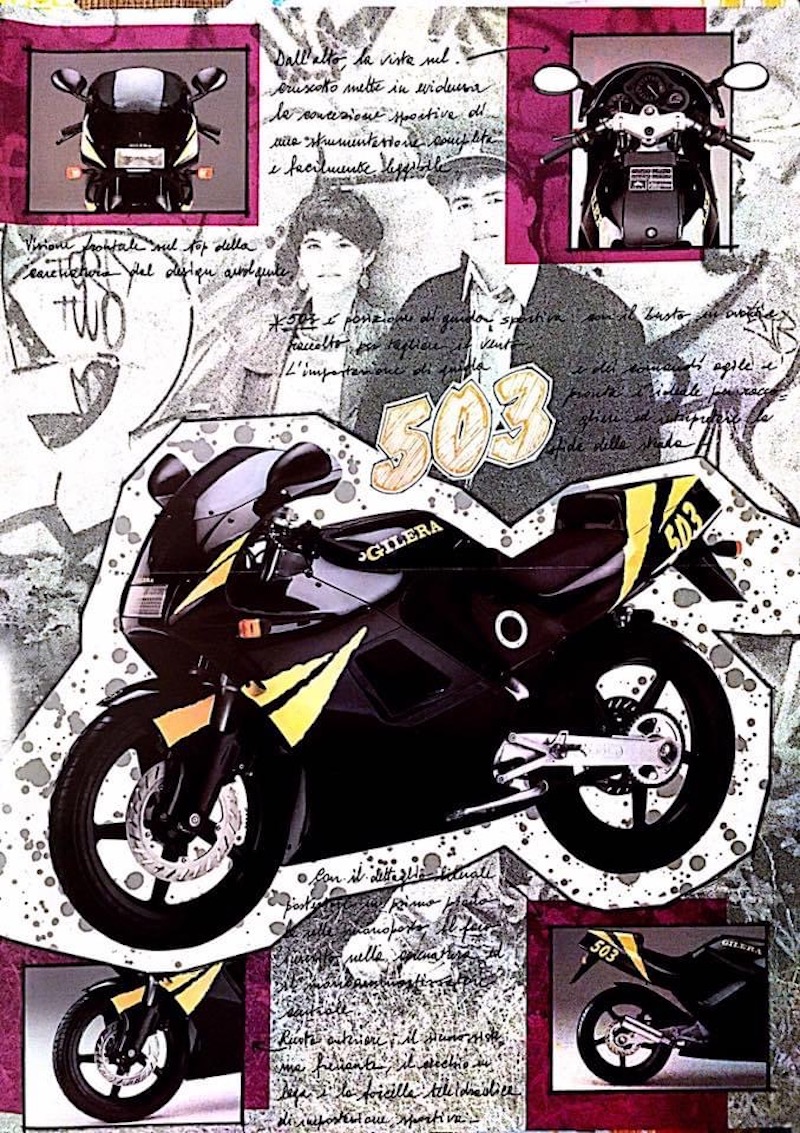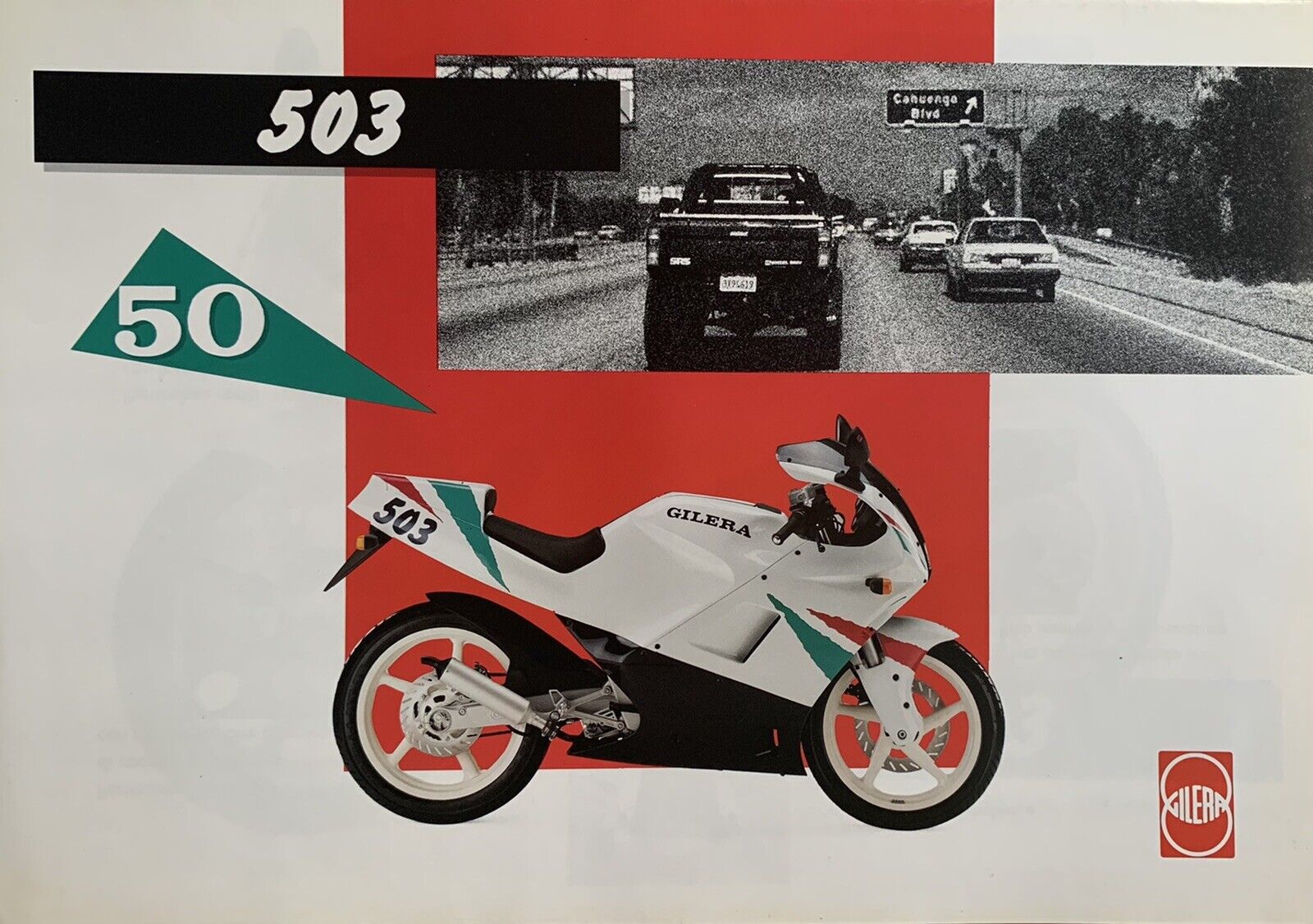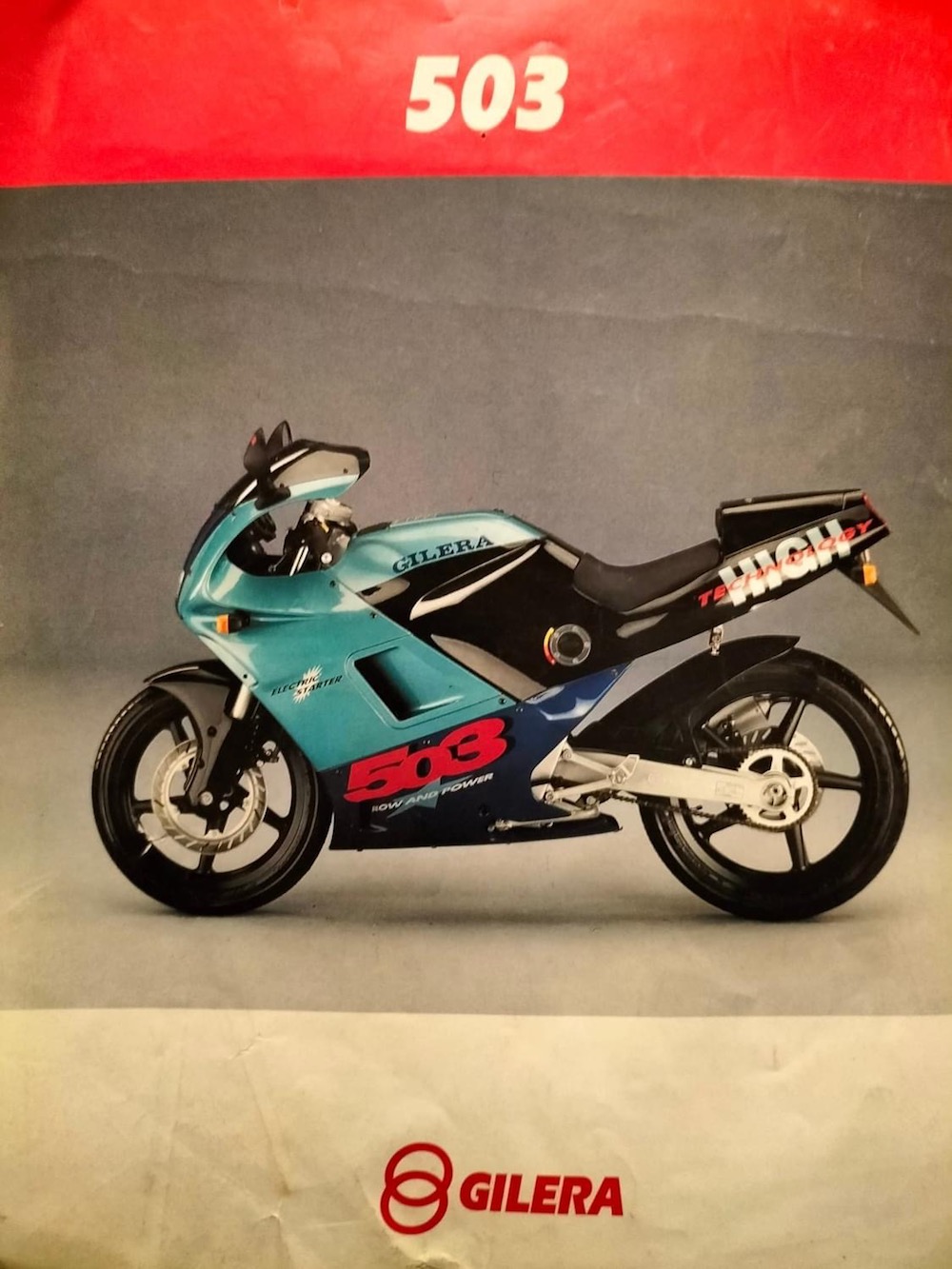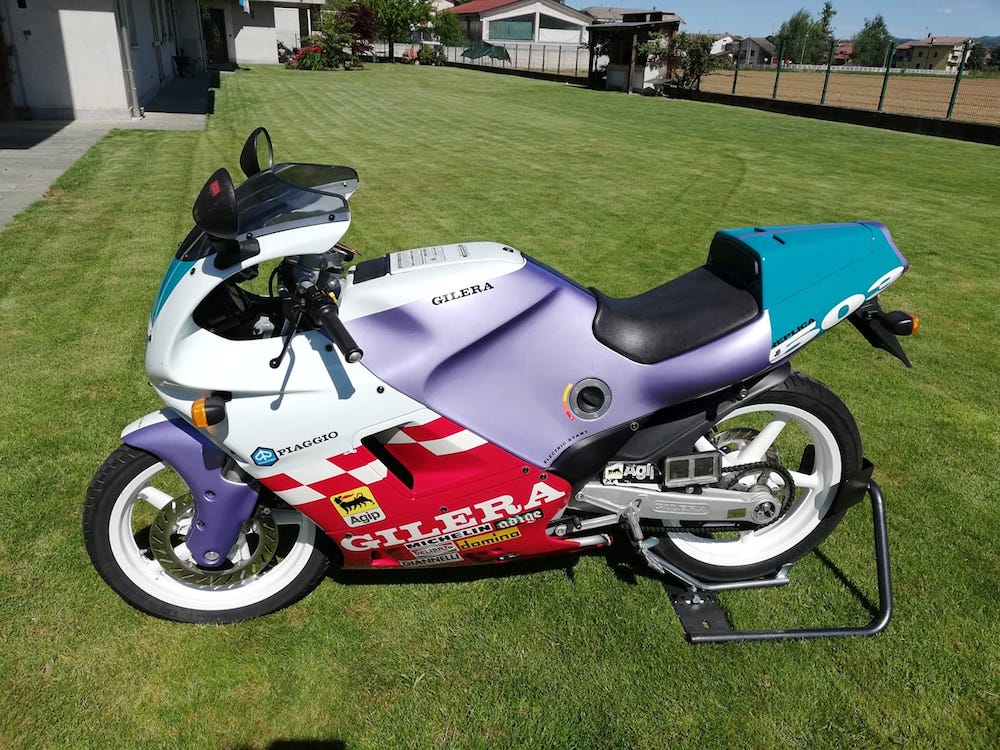Gilera negli anni ha sempre prodotto interessanti cinquantini, difficile non ricordare quei capolavori come la Regolarità Competizione 50 degli anni 70. Nel decennio successivo, almeno nella prima parte degli anni 80, Gilera si concentrò principalmente sui 125 e sui monocilindrici bialbero, tanto che il primo 50 moderno arrivò sul mercato solo nel 1987, con il Rally 50 motorizzato Ktm. Quindi, la casa di Arcore contava un certo ritardo rispetto ad Aprilia e Malaguti; un ritardo che cercò di colmare verso la fine degli anni 80 arrivando a progettare e costruire un suo motore ex-novo che andrà ad equipaggiare la Top Rally 50 e le sue evoluzioni, nonché la stradale 503 ed il Bullit 50 che ancora oggi riscuote un certo successo tra gli appassionati. Purtroppo, i tempi erano già maturi per gli scooter che presto avrebbero preso il posto nei desiderata dei quattordicenni ed i piani di Piaggio per Gilera furono molto chiari. Purtroppo.
Il motore Gilera 50.
Prima di iniziare a descrivere la produzione Gilera 50 degli anni 80 e 90, è importante soffermarsi sul cuore delle moto 50cc prodotte dalla casa di Arcore.
Il motore Gilera 50cc venne interamente progettato e prodotto in Gilera fino alla chiusura dello storico stabilimento di Arcore. Si trattava di un propulsore progettato nel momento esatto dove le normative del Codice della Strada cambiavano, lasciando ai costruttori la potenza libera per i loro motori 50cc (prima limitata ad 1,5cv), pur tuttavia introducendo l’assurda limitazione del numero massimo di 3 rapporti al cambio. Il propulsore nasceva con 4 rapporti e poteva avere il miscelatore automatico o meno e l’avviamento elettrico o a pedale. Gilera aveva quindi progettato un motore senza vincoli particolari che era in grado di erogare la ragguardevole potenza di 6,5cv (ovviamente senza strozzature) con il piccolo carburatore “codice” da 12mm. Sicuramente, nel 1989 era un propulsore decisamente più performante dei più diffusi Cagiva, Morini e Minarelli, ma fu subito evidente il suo tallone d’Achille: le vibrazioni. Lasciando la parola all’Ing. Romolo Ciancamerla (progettista all’epoca Gilera e coinvolto anche nello sviluppo del Bullit): “Per questioni di costi, il contralbero con il quale inizialmente lo si voleva dotare, rimase nella penna del progettista e pertanto si decise di procedere con una soluzione inusuale: il motore era dotato di solo due attacchi al telaio, uno anteriore ed uno posteriore e il vincolo alle culla anteriore del telaio era stato pensato non rigido, ma attraverso una sorta di corta bielletta che, nelle idee di chi la aveva pensata, avrebbe dovuto filtrare le vibrazioni. Si trattava di una soluzione già usata sugli scooter, ma che non portò ad alcun miglioramento: i telai, di qualsiasi veicolo si trattasse, si crepavano tutti sull’attacco di quella bielletta ed il motore vibrava comunque come un frullino, al punto che le plastiche dei veicoli dotati di quel motore, regolarmente si frantumavano!”. Non si trovò mai una soluzione se non quella di saldare il telaio dove si crepava.
Il motore Gilera 50 nacque con 4 rapporti ed era composto da un albero primario con 11-15-20-24 e da un albero secondario con 40-35-32-28. L’ingranaggio della 4 marcia montato sul secondario era presente ed andava solamente sbloccato (aprendo il carter per togliere il blocco sul desmodromico) per essere utilizzato. Una modifica che era assolutamente necessaria, in quanto privo dei fermi, il motore da 6,5cv si ritrovava con una terza marcia veramente corta!
Nel corso della produzione, l’ingranaggio della 4 marcia sul secondario venne eliminato – per ridurre i costi dato che tanto il limite imposto dal C.d.s. era di tre marce – e tutta la rapportata del cambio venne rivista, allungando tutte le marce. Pertanto per riportarlo a 4 marce, il motore doveva venire completamente aperto in due e l’ingranaggio della 4 marcia sul secondario andava fisicamente aggiunto, tanto che Gilera aveva infatti predisposto un apposito kit per la trasformazione. La modifica quindi portava il cambio a 4 marce con albero primario da 12-23-25-18 (in ordine di montaggio) con corrispondente albero secondario 38-29-26-34 (sempre in ordine di montaggio sull’albero). Esistono quindi due cambi totalmente differenti! (Ringrazio il blog di Meteolaipacco)
Si trattava comunque di un cambio piuttosto assurdo, frutto di scelte di compromesso imposte dal Codice. Come sempre per i motori 50 di quegli anni, la soluzione migliore sarebbe stata portare il cambio a 6 marce. Cosa possibile, andando a sostituire tutte le componenti: albero primario, albero secondario, desmodromico e albero selettore. L’operazione sarebbe possibile, ad es, utilizzando le componenti del cambio a 6 marce della Gilera Eaglet e GSM.
Concludiamo con le parole dell’Ing. Romolo Ciancamerla, menzionando che: “Alla chiusura dello stabilimento di Arcore alla fine del 1993, qualcuno decise che si doveva salvare solo il 50ino e, visto che le quantità erano troppo piccole per poter trasferire la costruzione del motore nel mega stabilimento di Pontedera…si trasferirono le attrezzature alla Franco Morini, che continuò a produrre il motore sotto il marchio Gilera; motore che venne utilizzato sia per i veicoli spagnoli sia per l’unico veicolo ex-Arcore che si decise di continuare a produrre in Spagna: la custom Eaglet, poi dotata di 6 marce.
Bene, quel motore venne prodotto da Franco Morini, per Gilera/Piaggio almeno fino al 1997 e venne anche montato, con cambio a 6 marce, sul motard Gilera GSM 50 del 1999.”
Rally 50 – 1987
Il Rally 50 era il prima moto 50 moderna prodotta da Gilera e nonostante fosse un modello completamente inedito, nasceva già molto ben equipaggiato. La strumentazione molto completa, la buona qualità delle carenature ed una ciclistica alla moda – sebbene non fosse previsto il freno a disco posteriore – erano proposti al prezzo di Lire 2.850.000. Molto interessante il motore Ktm, raffreddato a liquido con circolazione forzata, provvisto di ammissione lamellare, miscelatore automatico e cambio a 4 rapporti come imposto dalla legge. Si trattava di un motore molto valido, che vibrava poco e che derivava dalla versione da cross di 80cc; peccato solo non fosse previsto l’avviamento elettrico, ormai accessorio irrinunciabile anche per i 50. Due le colorazioni disponibili: bianca, nera e rossa e bianca, nera e blu.
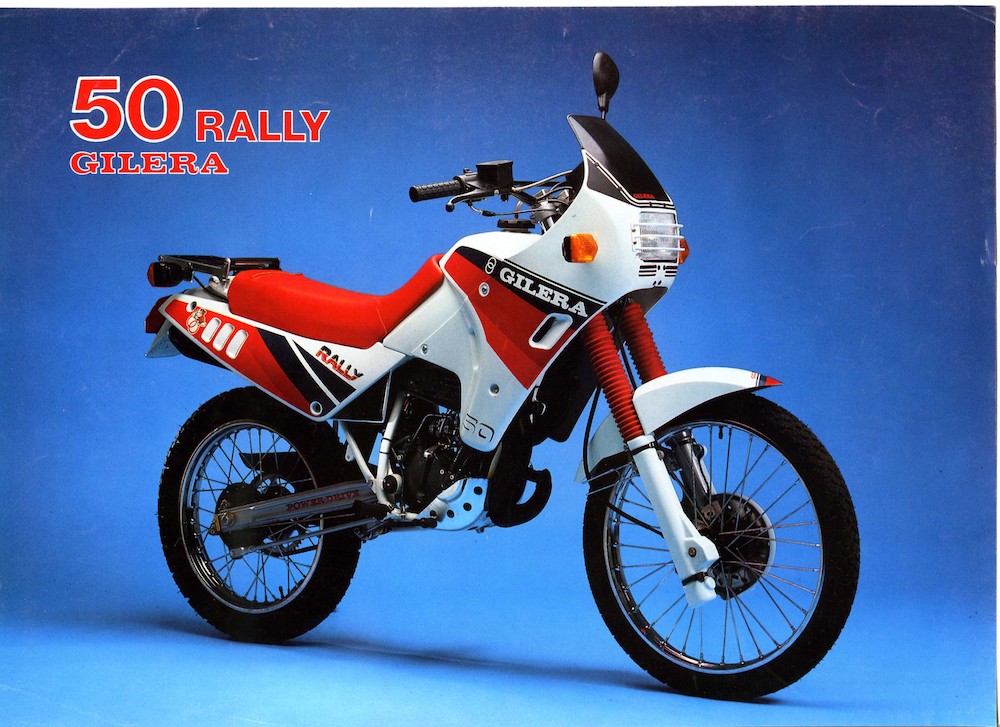
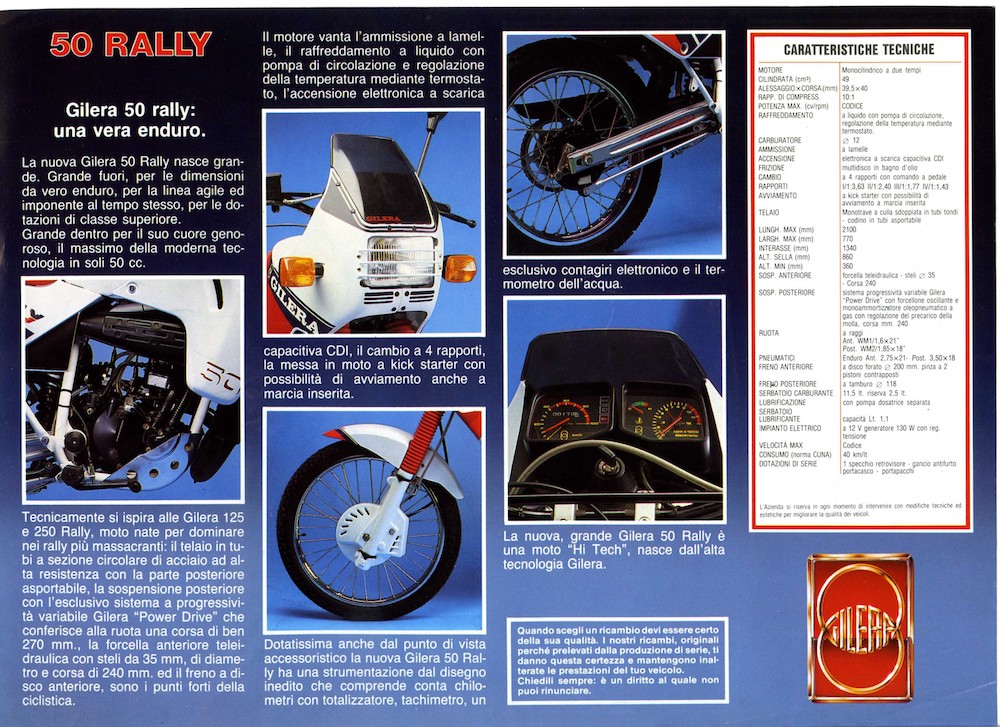
R1 50 – 1988
La R1 50 era posta in vendita a Lire 3.050.00 in due colorazioni: nero-rosso e bianco-rosso. La base rimane a quella della Rally 50 dell’anno precedente e quindi anche il propulsore Ktm che rimane invariato.
RC 50 Top Rally – 1989
La RC 50 Top Rally introduceva importanti novità per le moto 50cc prodotte da Gilera e nello specifico un nuovissimo propulsore interamente progettato e costruito in Gilera che sfruttando la nuova legge che aboliva il limite di potenza per i motori 50cc (prima fissata in 1,5cv, ma ora accompagnata alla riduzione del numero massimo di 3 rapporti al cambio) e poteva vantare ben 6,5cv. Il raffreddamento si manteneva sempre a circolazione forzata, ma ora l’ammissione lamellare era direttamente nel carter ed oltre al miscelatore automatico era finalmente disponibile anche l’avviamento elettrico. La ciclistica si basava largamente sulla precedente Rally 125, sebbene la taratura delle sospensioni era stata rivista ed al posteriore finalmente faceva la sua comparsa un disco posteriore da 230mm. Nuove le sovrastrutture ed inedita la completa strumentazione. Rosso o nero le colorazioni disponibili.
Sioux 50 – 1990
Ispirata alla Apache 125, la Sioux prendeva il posto della precedente RC 50 Top Rally. Venduta al prezzo di Lire 3.900.000, la Sioux in buona sostanza si differenziava dalla RC solo per la taratura della forcella, sempre da 35mm, rivista nell’idraulica e del mono-ammortizzatore posteriore. Invariato tutto il resto e quindi anche il motore Gilera sempre con 3 rapporti. Due le colorazioni previste: blu con sella gialla o bianca con sella verde.
Bullit 50 – 1990
Proposto al prezzo di lire 2.500.000 (lire 150.000 l’avviamento elettrico, il Bullit ha rappresentato una decisa novità nel mondo dei 50ini. Era difficile collocarlo come tubone, ma anche come moto; diciamo che il Bullit ha aperto un nuovo filone del quale fu l’unico partecipante. Il telaio era sempre “aperto” come quello dei tuboni, ma le analogie si fermavano li. La struttura utilizzata era infatti una bitrave diagonale scatolata in acciaio, accoppiata ad un forcellone monobraccio con la ruota a sbalzo. Il reparto sospensioni vedeva una forcella da 30mm accoppiata ad una sospensione mono gas. Freno a disco da 240mm all’avantreno accoppiato ad un classico tamburo al posteriore, abbinato ad una insolita corona di trasmissione un pò disossata verso l’interno. Il motore rimaneva il conosciuto Gilera con ammissione lamellare nel carter, miscelatore automatico ed avviamento elettrico (optional) introdotto sulla RC Top Rally del 1989 e sempre dotato di 3 rapporti. I colori disponibili nel 1990 erano: bianco-rosso-blu, nero-rosso-bianco e azzurro-verde acqua. Il Bullit rimase in produzione fino al 1993 e venne proposto in molteplici colorazioni.
Gilera 503 – 1991 (tipo 73)
Presentata nel 1991, la Gilera 503 (codice tipo 73) è la prima moto da 50cc stradale sportiva di Gilera che si affianca alla regina della categoria Aprilia AF1 50, in attesa dell’arrivo della Cagiva Prima 50 nel 1992. La carenatura integrale cela completamente il telaio ed il propulsore, diventando la nota stilistica della 503 rispetto alla concorrenza. La dotazione di serie é ragguardevole con la completa strumentazione praticamente identica a quella della Crono 125, il miscelatore automatico e l’avviamento elettrico.
La ciclistica vede un telaio in acciaio a doppio trave diagonale completo di un struttura in tubi che sorregge il codino. Il bellissimo forcellone in alluminio dotato di eccentrici per la regolazione della tensione della catena é una vera chicca se consideriamo la cilindrata della 503. Le sospensioni vedono all’avantreno una forcella tradizionale con steli da 32mm ed al posteriore la conosciuta sospensione Power Drive abbinata a mono ammortizzatore. L’impianto frenante si caratterizza per un disco anteriore da 270mm ed al poteriore da 240mm. Le ruota anteriore é da 16″ e quella posteriore da 17″.
Il motore é il classico propulsore Gilera da 6,5cv (se sbloccato) già descritto in apertura e dotato di tre marce a causa del C.d.s. Come indicato, è possibile montargli la 4 marcia con il kit apposito oppure provare a montare tutto il cambio a 6 marce della successiva Gilera Eaglet. Purtroppo, rimane il problema delle vibrazioni che possono portare alla rotture dell’attacco motore anteriore sul telaio.
La 503 viene proposta al prezzo di Lire 4.100.00 compreso l’avviamento elettrico, inizialmente in due colorazioni: nero con fregi gialli e fucsia-nero con fregi bianchi. Segue una colorazione bianco/nero e nel 1993 vengono riproposte le medesime colorazione della GFR 125, ovvero Gramigni Replica e High Tech.

